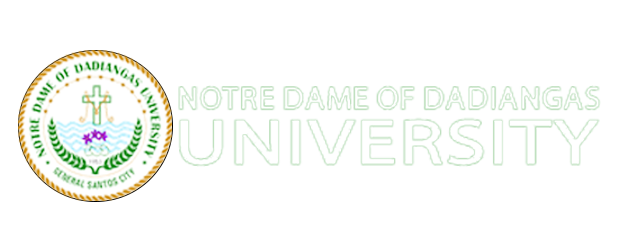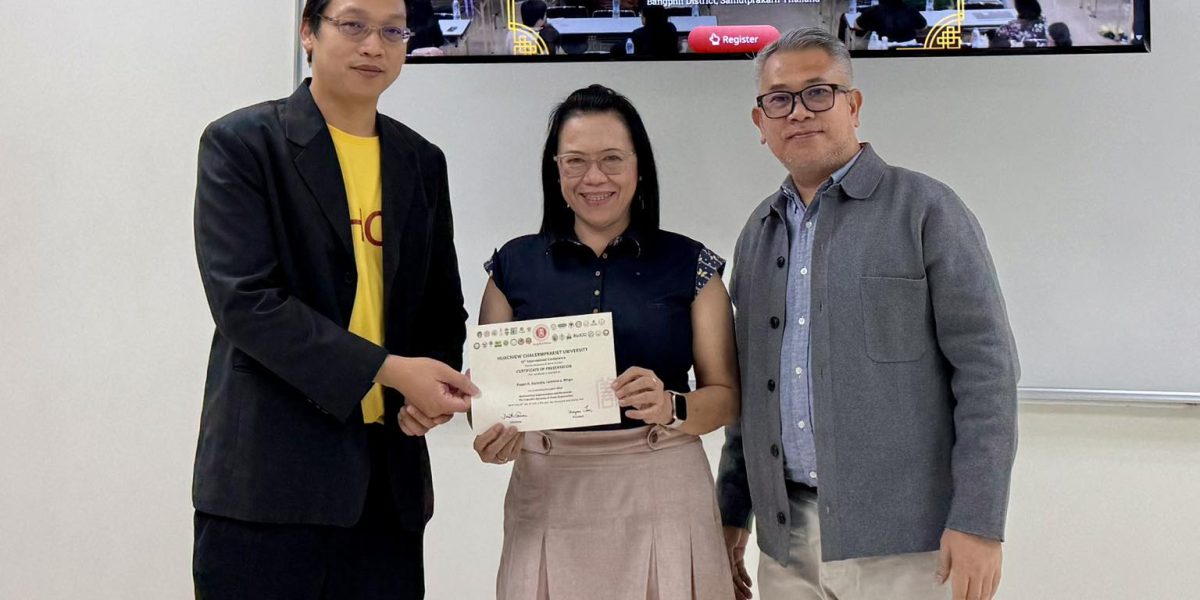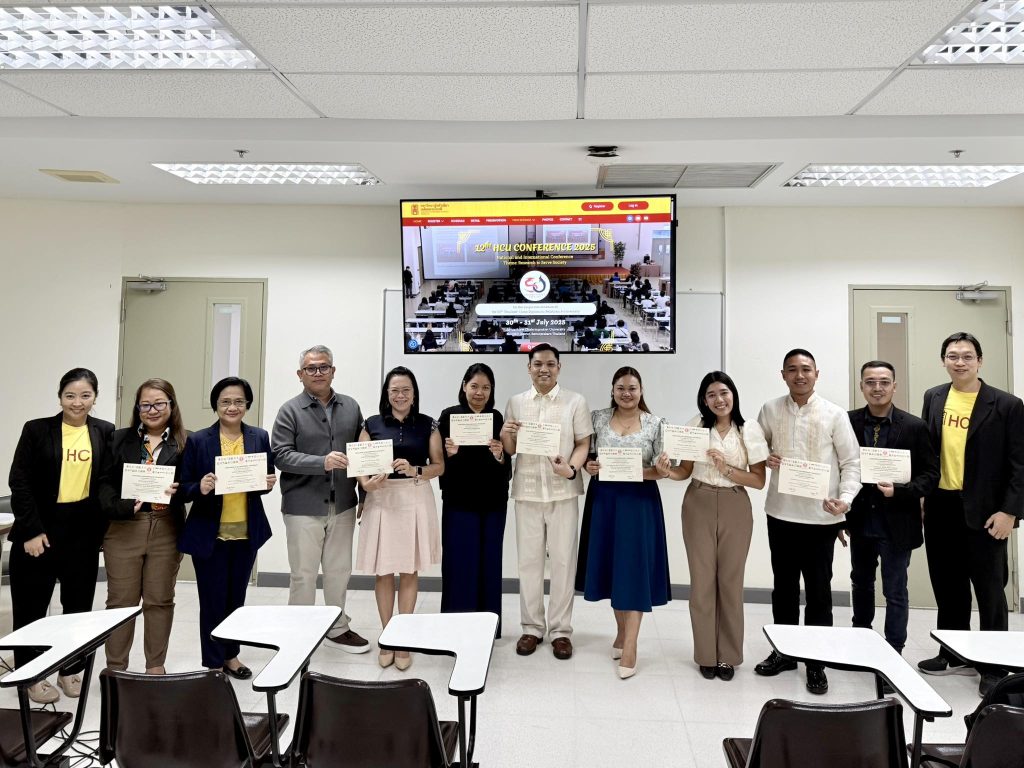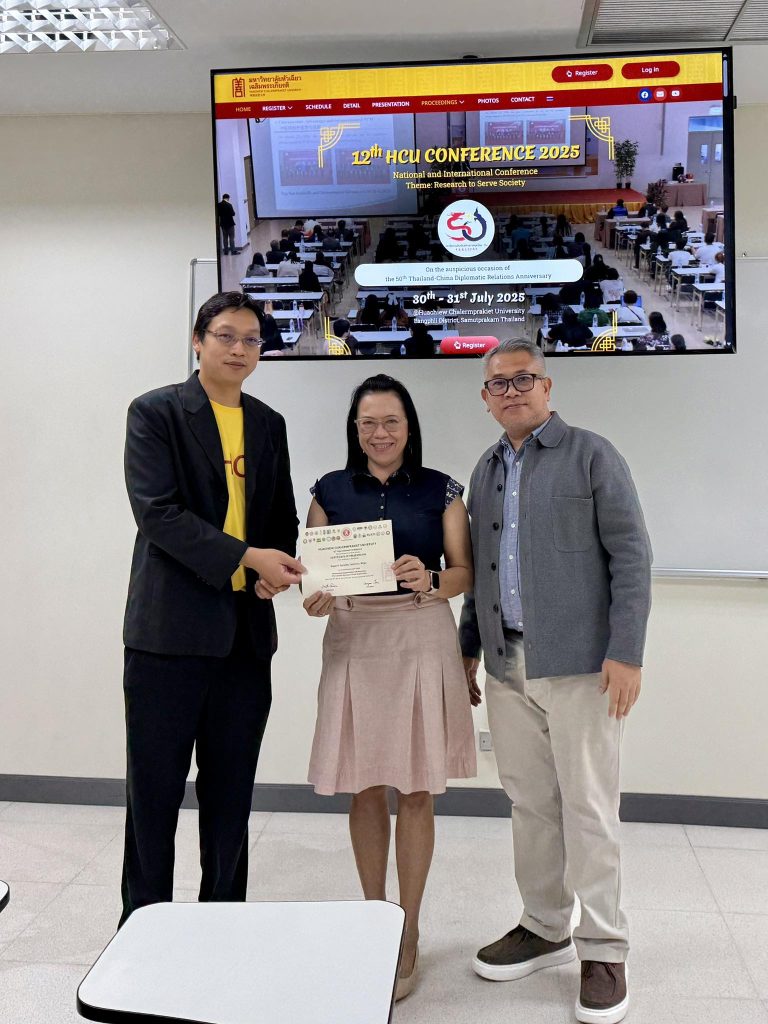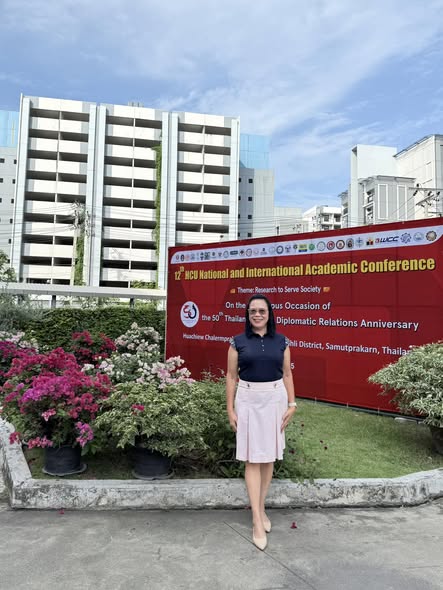𝘉𝘢𝘯𝘨𝘱𝘩𝘭𝘪 𝘋𝘪𝘴𝘵𝘳𝘪𝘤𝘵, 𝘚𝘢𝘮𝘶𝘵𝘱𝘳𝘢𝘬𝘢𝘳𝘯, 𝘛𝘩𝘢𝘪𝘭𝘢𝘯𝘥 – 𝘑𝘶𝘭𝘺 31, 2025
In the world of mathematics, proofs are often thought of as the ultimate test of logic—symbols, equations, and structured reasoning coming together to demonstrate truth. But at the 12th 𝙃𝙪𝙖𝙘𝙝𝙞𝙚𝙬 𝘾𝙝𝙖𝙡𝙚𝙧𝙢𝙥𝙧𝙖𝙠𝙞𝙚𝙩 𝙐𝙣𝙞𝙫𝙚𝙧𝙨𝙞𝙩𝙮 (𝙃𝘾𝙐) 𝙄𝙣𝙩𝙚𝙧𝙣𝙖𝙩𝙞𝙤𝙣𝙖𝙡 𝘾𝙤𝙣𝙛𝙚𝙧𝙚𝙣𝙘𝙚 in Thailand, 𝗗𝗿. 𝗟𝗲𝗼𝗻𝗼𝗿𝗮 𝗟. 𝗠𝗶𝗻𝗴𝗼 of Notre Dame of Dadiangas University (NDDU) reminded the academic community that words, too, carry equal weight in the process.
Presenting her study, “𝙈𝙖𝙩𝙝𝙚𝙢𝙖𝙩𝙞𝙘𝙖𝙡 𝘼𝙧𝙜𝙪𝙢𝙚𝙣𝙩𝙖𝙩𝙞𝙤𝙣 𝙖𝙣𝙙 𝙋𝙚𝙧𝙨𝙪𝙖𝙨𝙞𝙤𝙣: 𝙏𝙝𝙚 𝙇𝙞𝙣𝙜𝙪𝙞𝙨𝙩𝙞𝙘 𝘿𝙮𝙣𝙖𝙢𝙞𝙘𝙨 𝙞𝙣 𝙋𝙧𝙤𝙤𝙛 𝘾𝙤𝙣𝙨𝙩𝙧𝙪𝙘𝙩𝙞𝙤𝙣,” co-authored with 𝗗𝗿. 𝗥𝗼𝗴𝗲𝗻 𝗔. 𝗗𝗼𝗿𝗼𝗻𝗶𝗹𝗮, Dr. Mingo explored how graduate students don’t just prove with logic—they persuade with language. The research examined twenty graduate-level proofs, combining corpus linguistics, axiomatic method analysis, and linguistic-content analysis to uncover how rhetoric and structure work hand in hand.
The findings revealed that while traditional proof methods such as direct proof, proof by contradiction, and biconditional proof remain staples, the subtler linguistic choices students make often shape how convincing a proof becomes. Natural language, according to the study, acts as a scaffold—helping frame assumptions, clarify reasoning, and guide logical flow. Features like discourse markers, conditional phrasing, and modal expressions provide the connective tissue that makes abstract reasoning accessible and persuasive.
Dr. Mingo stressed that persuasiveness in mathematics does not stop at correctness. A proof may be logically sound, but its ability to engage and convince rests in how clearly it communicates its reasoning. This perspective points to a more holistic approach to mathematics education, one that encourages reflective writing, genre-based instruction, and multimodal proof construction to strengthen both analytical sharpness and communicative clarity among graduate students.
Beyond its academic contribution, the study aligns with the global call for 𝙎𝙪𝙨𝙩𝙖𝙞𝙣𝙖𝙗𝙡𝙚 𝘿𝙚𝙫𝙚𝙡𝙤𝙥𝙢𝙚𝙣𝙩 𝙂𝙤𝙖𝙡 4 (𝙌𝙪𝙖𝙡𝙞𝙩𝙮 𝙀𝙙𝙪𝙘𝙖𝙩𝙞𝙤𝙣) by promoting pedagogical practices that integrate logic with language, ensuring that mathematics teaching equips learners not just with computational skill but with expressive and reasoning abilities vital for professional and academic success.
Her presentation was part of the NDDU delegation’s contributions to the HCU International Conference, which carried the theme “𝙍𝙚𝙨𝙚𝙖𝙧𝙘𝙝 𝙩𝙤 𝙎𝙚𝙧𝙫𝙚 𝙎𝙤𝙘𝙞𝙚𝙩𝙮.” In highlighting how language and mathematics intersect, Dr. Mingo’s work underscored NDDU’s commitment to bridging disciplines, advancing innovative educational research, and cultivating learning that is both rigorous and humane.

